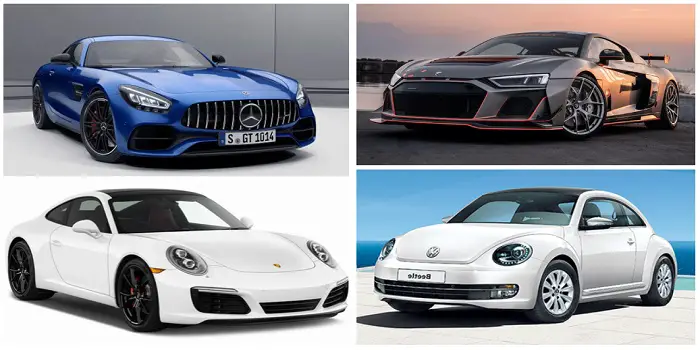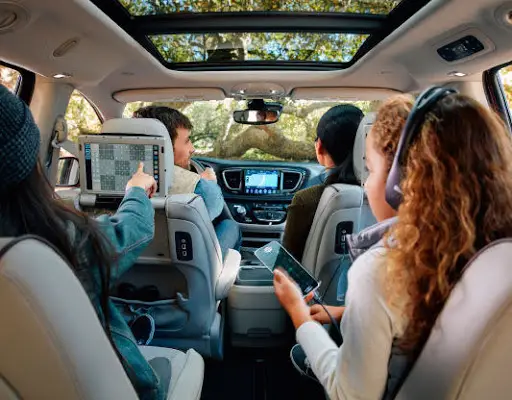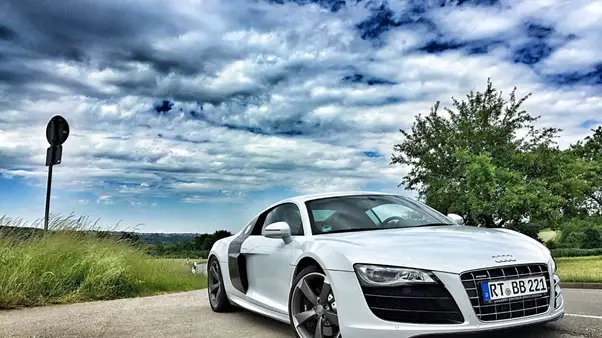The first thing that comes to mind when thinking of German cars is built quality and efficiency.
It’s not rare to come across a Mercedes, BMW, or Audi with over 200,000 miles on the odometer that still looks and feels brand new.
For many years, German automakers have been world-renowned for producing reliable, refined, and magnificent vehicles that survive the test of time and usage.
This is a subjective list, and you may not find your favorite German car on it, but there are plenty to pick from.
So here are the top 10 of what we consider the greatest German cars of all time.

Table of Contents
1. Mercedes AMG GT
Mercedes has to be the first brand name that comes to mind when thinking about automotive aficionados since it is linked with Germany.
This German-designed car has not only made a reputation for itself in the automotive business, but it has also continued to deliver on its promise and has moved from glory to glory.
The Mercedes-Benz AMG GT’s large hood is the first thing you see, but below lies a 4-liter V8 twin-turbo engine with a 7-speed automated gearbox that gives an exhilarating ride, pushing you from 0 to 60 in 3.7 seconds.
Furthermore, the cabin is near-perfect, outfitted with everything you could want in a premium car. This vehicle embodies elegance, style, and the good life.
2. BMW M3
When it came to creating execution models of creative cars, BMW’s in-house motorsport team established a high standard with the E30 age 3 Series.
The M3 was a fantastic triumph in motorsport, and it has been replicated with rapid yet refined automobiles that are a delight to drive.
Since the E30 model exploded into the world in 1986, every subsequent 3 Series has had an extremely speedy M division rendition.
3. Audi R8
The Audi R8 was previewed in 2003 as the Le Mans Quattro concept vehicle, which commemorated the marque’s trio of back-to-back triumphs on the Circuit de la Sarthe in the early 2000s.
Audi’s R8 Le Man’s prototype had added two more straight 24 Hours wins to its score by the time the production version arrived in 2006, and the R8 road car possessed a specification that suggested Audi had entered the GT car elite.
The smaller-engined 4.2 FSi model, available with V8 power or later, a 5.2-liter V10 as well, was the purist’s sweet spot in the line-up.
Not only did it seem more agile than the V10 without sacrificing much in terms of actual performance, but it was also available with a manual gearbox, which we called one of the most intuitive, smooth, and pleasurable changes in production.
The R8 driving experience was also terrific, with a perfectly balanced and composed mid-engine chassis that provided outstanding performance while maintaining a soft ride that made the R8 a delight to drive.
4. Porsche 911
You can’t discuss German vehicles without discussing Porsche, and you can’t discuss Porsche without mentioning the brand’s trademark set of wheels: the 911.
The world first saw the Porsche 901 at the 1963 Frankfurt IAA Motor Show, which was renamed 911 for its 1964 market debut.
Many variants followed, including the Targa, Carrera, and Turbo, but the car that represents the Porsche brand in terms of beauty and performance remains relatively identical today.
5. Volkswagen Beetle
The Beetle, also known as the Volkswagen Type 1 or Käfer (German for “beetle”), is a five-passenger automobile with a rear engine that sets it apart from the front-engine type.
Originally constructed for the system at the time, it had 25 horsepower and a peak speed of 62 mph, but after the Cold War, its power increased to 36 and up to 40 hp.
It is also the most produced car, with over 21 million units built, and the longest-running. However, it was eventually surpassed by the Golf model.
6. Volkswagen MK1 Golf
When the MK1 Golf debuted in 1974 (’75 in the United States as the Rabbit), it was supposed to replace the Beetle, but it never did.
However, it did become one of the world’s best-selling vehicles and a symbol of affordability, dependability, and fun.
It was a landmark event, heralding VW’s transition from rear-wheel drive to front-wheel drive, as well as the introduction of water-cooled, front-mounted engines.
The legendary Golf, now in its eighth generation, is the quintessential hatchback, the bestselling car in VW history, and one of the world’s three most-purchased automobiles.
7. Mercedes Benz 300 SL
This vintage beauty was hailed as the quickest and best production automobile of its day.
It was manufactured by Daimler-Benz AG and debuted at the 1954 New York Auto Show, based on a concept proposed by Max Hoffman to produce a scaled-down Grand Prix automobile.
This two-seat coupe, subsequently available as an open roadster from 1957 to 1963, had gull-wing doors, a 3.0-liter engine, and the world’s first fuel-injected, producing the world’s fastest top speed at the time.
It was eventually superseded by the Mercedes 230 SL, and now, this successful and famous automobile has a modern-day version.
The Mercedes-Benz SLS AMG, which retains its predecessor’s characteristic gull-winged doors.
The 300 SL is an automotive classic that defies current sports-car standards by providing ample comfort and great embellishments.
It features a rich finish and a timeless design idea that will have an impact on the automobile industry for many years to come.
8. Audi Quattro
Audi in 1981 demonstrated that two-wheel-drive cars with rear-mounted engines, capable enough of dominating the rally circuit.
Throughout the decade, Audi’s four-wheel-drive Quattro system hammered the competition in key rally events, forcing Audi to adapt the motorsport idea for the production of road cars.
Since then, every Audi has included Quattro’s four-wheel-drive technology, and the name has become associated with AWD luxury.
9. Porsche 356 Speedster
While the 911 has become Porsche’s hallmark, the 356 Speedster established the benchmark by which all 911s would be measured.
It was a lightweight, quick, balanced-handling rear-engined, rear-wheel-drive sports car that radiated flair despite being on the modest side in terms of luxury and convenience.
For the first two years of manufacturing, it flew beneath the radar, and just 50 of them were created.
However, it won races and sales soared after that up to its 4 generations.
10. Mercedes E-Class
The E-Class is Mercedes-best-selling Benz’s car, and that’s no surprise considering that it was crowned Executive Car of the Year by Auto Express in 2016, and UK Car of the Year in 2017.
The E-Class is well-liked for its smooth driving, powerful engine, and sleek, roomy cabin.
It also has a reassuringly high safety rating and solid environmental credentials.
Overall, it’s a one-of-a-kind german car that people from all over the world appear to admire for its beauty and sophistication.
Conclusion
We listed the top 10 most popular German cars ever produced.
Refined engines, efficiency, reliability, details, luxury, power, speed, and beauty, all of which German cars are known for.
Tell us if your favorite German car made up on this list in the comments.

Based in Orem (Utah) John Paterson graduated from Utah Valley University and has begun writing in 2009. He has a large wealth of experience in writing articles related to cars, automotive repair, wheels, cleaning/maintenance, and much more. He has also written instructional articles in a similar niche for a few online publications as well. Currently, he works as a mechanic in his personal garage shop where he loves serving his countrymen from his heart.





